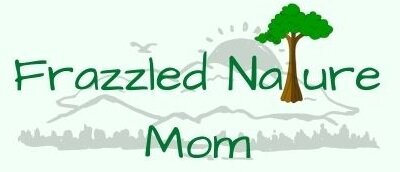Why are Wildfires Getting Worse?
3 Factors that Contribute to Extreme Wildfire Seasons
As I write this, I am cooped up inside with all the doors and windows closed. Outside, the sky has taken on an eerie haze and I can smell the faint hint of smoke through the cracks and crevices of my home. I live in Western Washington, and while we do not have any active wildfires super close by, the wind has shifted in the past few days to bring the smoke up from the Oregon and California fires and west from the Eastern Washington fires. Yep, it’s definitely wildfire season!
You may be asking, “Are these wildfire seasons getting worse, or is the fact that we have media coverage at our fingertips at all times making it seem like it’s getting worse”. The answer is both. Thanks to our ever-increasing technological advances, we are more aware of what is happening, and we are watching it get worse. Wildfire season has become longer due to increased adverse conditions that allow fires to start earlier and to burn for longer. According to the United States Department of Agriculture (USDA), earlier winter snowmelt and later rainy seasons have turned what used to be a four-month wildfire season into six-to-eight months of wildfire danger. But what is causing this phenomenon? Read on to discover three major factors contributing to more devastating wildfire seasons.
Forest Management Errors
Whether we like it or not, fire has always played an essential role in keeping our forest ecosystems healthy (more on that in a later article). However, as with many things, we discovered this fact too late. Decades of suppressing wildfires have led to an unhealthy build-up of fuel in our forests. When discussing a wildfire, the term “fuel” refers to highly flammable plant material such as grasses, shrubs, leaf litter, fallen pine needles, etc. As these flammable materials increase, the chances of a devastating wildfire also increase. In addition, areas that have been suppressed tend to be filled with older trees that are more susceptible to not only fire but also attack by destructive insect species (such as the mountain pine beetle). Areas where fire has not been suppressed tend to be a heterogeneous mixture of old and new plant growth, which leads to less fuel and less risk of catastrophic wildfire.
Climate Change
You may be wondering why I didn’t put climate change at the top of my list as almost every other article does. My reasoning is because while climate change is a huge contributing factor, it isn’t the ONLY factor leading to more challenging wildfire seasons. Nevertheless, increasing temperatures are leading to earlier winter snowmelt and a later onset of rain in the fall. This leads to less moisture in the soil and drier summer conditions, which increases the amount of fuel that can easily ignite into a wildfire. That being said, hot, dry conditions do not automatically mean that a fire is inevitable. You still need the spark. With climate change also comes the onset of more extreme weather including more lightning storms that can ignite those dry fuels. However, the majority of large, destructive fires (especially those that we see on the west coast) are not ignited naturally. They are the product of humans.
Human Growth (and a Dash of Carelessness)
That brings us to our third factor. Humans have a two-fold, detrimental effect on wildfire devastation: habitat encroachment and fire ignition. With high populations, more and more community development is occurring near forests and other wild landscapes. This area where human populations are mixing with wild areas is termed the “Wildland-Urban Interface”, and it can increase the risk of catastrophic wildfires. This is due not only to the threat of major property damage and an increase in potential fuel, but also the threat of accidental fire ignition. The vast majority (we are talking up to 90%) of wildfires are caused by humans through unattended campfires, the burning of debris, discarded cigarettes, arson, gender reveal parties gone wrong, etc. (and no, I didn’t make that last one up… look up the El Dorado fire in California).
What Can We Do?
Forest management services have already begun taking steps in the right direction as we change our mindset on the importance of fire. Fires that are not a threat to humans and structures are allowed to burn while being monitored closely. Prescribed burns are set and managed in areas that have a build-up of fuel to help prevent larger, more devastating fires to occur. That being said, the increase of development along the wildland-urban interface can make it difficult for fire management services to manage our fire-prone landscapes. Slowing this growth of development and educating established communities near forests on precautions they can take to prevent fire can go a long way to decreasing the threat of wildfire. Halting risky behavior of those close to us along with reporting inappropriate handling of flammable materials (such as unattended campfires and inappropriate disposal of cigarettes) can also help prevent unnecessary wildfires.
What are your thoughts on the current wildfire conditions? Let us know in the comments below!
Top photo courtesy of Mike Pelka


